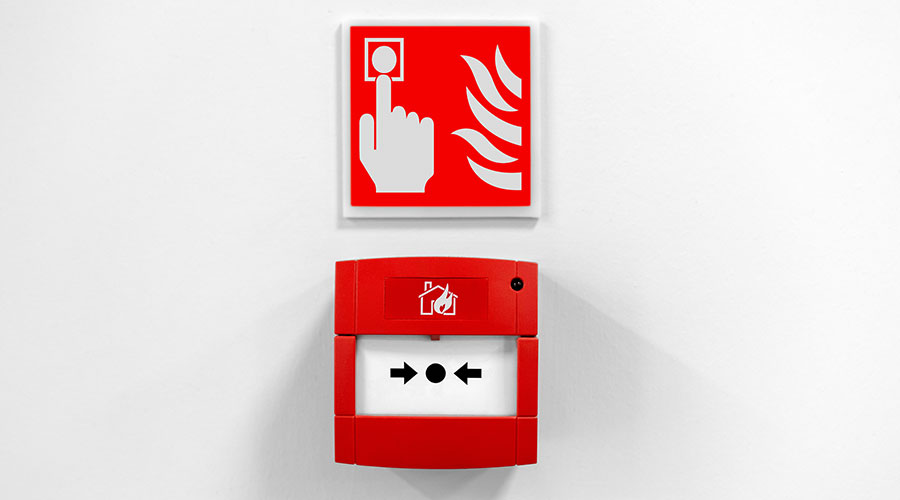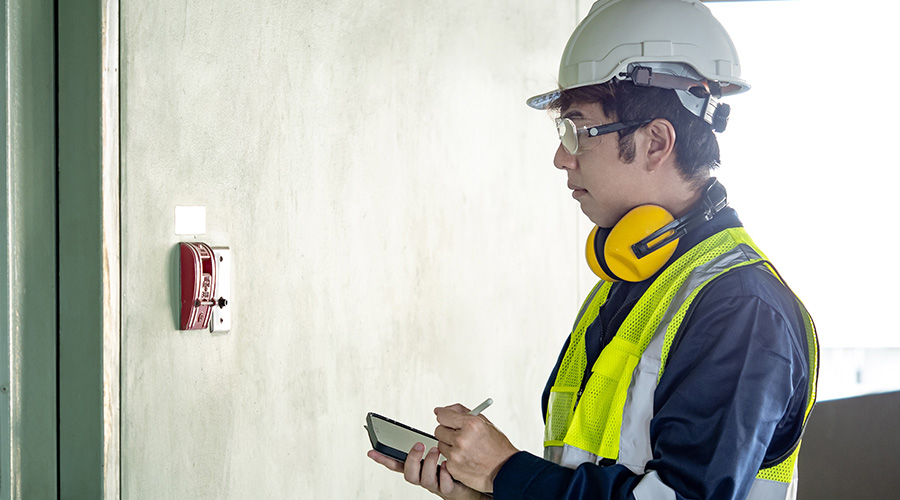Authority Having Jurisdiction (AHJ) Plays Crucial Role in Fire Alarm Upgrades
Part 1 of a 2-part article about fire life/safety upgrades in commercial buildings.
The authority having jurisdiction, or AHJ, plays a crucial role in ensuring fire/life safety in buildings, and it’s essential that facility managers understand what the AHJ is and the role it plays throughout the life of a building.
The first thing to understand is that the AHJ is not a single entity. Depending on the jurisdiction your facility is in, the type of facility you’re in, and who “owns” your facility, you may be visited not only by the fire marshal, but by a variety of individuals — referred to as “the authority having jurisdiction” — who come onto the premises to look at how well or how poorly your fire, life, and electrical safety programs are doing.
NFPA codes define the AHJ as “an organization, office, or individual responsible for enforcing the requirements of a code or standard, or for approving equipment, materials, an installation, or a procedure.” This definition is also elaborated on in the annex of the codes, a portion of which states, “Where public safety is primary, the AHJ may be a federal, state, local, or other regional department or individual such as a fire chief; fire marshal; chief of a fire prevention bureau, labor department, or health department; building official; electrical inspector; or others having statutory authority. For insurance purposes, an insurance inspection department, rating bureau, or other insurance company representative may be the AHJ.”
As that statement makes clear, the AHJ is often more than a single person, office, or entity. While typically thought of as a representative from a local government, the AHJ might be an employee of a state or federal agency, or even from the private sector in the case of insurance. Take, for example, a hospital, which is likely to be subjected to visits by multiple AHJs. These include:
• Local government: building department, fire department
• State government: state fire marshal, state health department
• Federal government: Centers for Medicare & Medicaid Services (CMS)
• Private sector: insurance company, third-party certification/accreditation organizations
With each of these sectors, various disciplines, or AHJs with unique or specialized areas of focus, might be present. An AHJ with overall knowledge of building and fire code issues, or one with special knowledge of plumbing systems and electrical systems, are a few examples of whom you might encounter.
Critical Role
On occasion, there are stories about the “fire marshal wouldn’t let us do such and such” — admit more people into the club, set up a food truck stand, store furniture in the exit stair, etc. Contrary to some popular myths, fire marshals and other AHJs simply do not make up their own rules. One of their primary jobs is to enforce the locally adopted codes and standards in the jurisdiction. Once adopted, codes and standards like those developed by NFPA are the de facto “law” for that jurisdiction. The restrictions, limits, or changes in your building that the AHJ has identified are there to protect the owner, the building occupants, first responders, and the community at large.
In this capacity, think of AHJs as customer service representatives. They help with carrying out the “policy” (adopted code) for the jurisdiction. During construction or renovations, they are also allies of the building owner. The AHJ is usually involved in the plan review process. This process helps ensure that the building and its related systems meet the requirements of the adopted code or standard and that the building’s construction features, systems, and architectural features are in compliance, thereby assuring the building owner that he or she is paying for a code-complying structure.
Understanding Codes
The codes and standards development process in the United States is unusual when compared to other countries. It is managed almost entirely within the private sector. There is no federal government code. While the processes used to develop the code-based provisions have some differences — some more significant than others — the NFPA code development process uses the principles of the American National Standards Institute (ANSI). These principles include:
• Consensus must be reached by representatives from materially affected and interested parties.
• Standards are required to undergo public reviews when any member of the public may submit comments.
• Comments from the consensus body and public review commenters must be responded to in good faith.
• An appeals process is required.
Transparency, openness, and inclusion are at the center of this process. NFPA uses a model of balanced committees to derive requirements. In short, that means NFPA brings a mix of materially affected, interested parties to the table to develop the requirements. In regard to the building, those who have to do the enforcing (the AHJ), pay for the building (the building owners), maintain it (the owners/contractors), install it (the contractors), design it (the architects/engineers), and insure it (the insurance company), all have a perspective on what the “requirement” should be, and they work together to find that balance.
As noted previously, once a code is adopted by a jurisdiction, it is in essence the law for that jurisdiction. That is what the AHJ and the building owner are obligated to follow and it is what the AHJ is obligated to enforce. Finding out which code is applicable can be a bit tricky. A state or local jurisdiction may be several editions behind in adopting the most current code. For instance, the current edition of NFPA 101, Life Safety Code, is 2015. Although this code is updated every three years, some jurisdictions may be using a 2012 edition or even a 2009 edition. Further, a particular edition may be adopted at the state level but home rule may allow the code to be modified at the local level. The AHJ is the best person to ask to learn which edition and what, if any, local amendments are in effect for the jurisdiction. This approach is also a great way to strike up a relationship with the AHJ. Doing so can give you a better understanding of expectations and requirements.
Related Topics:













